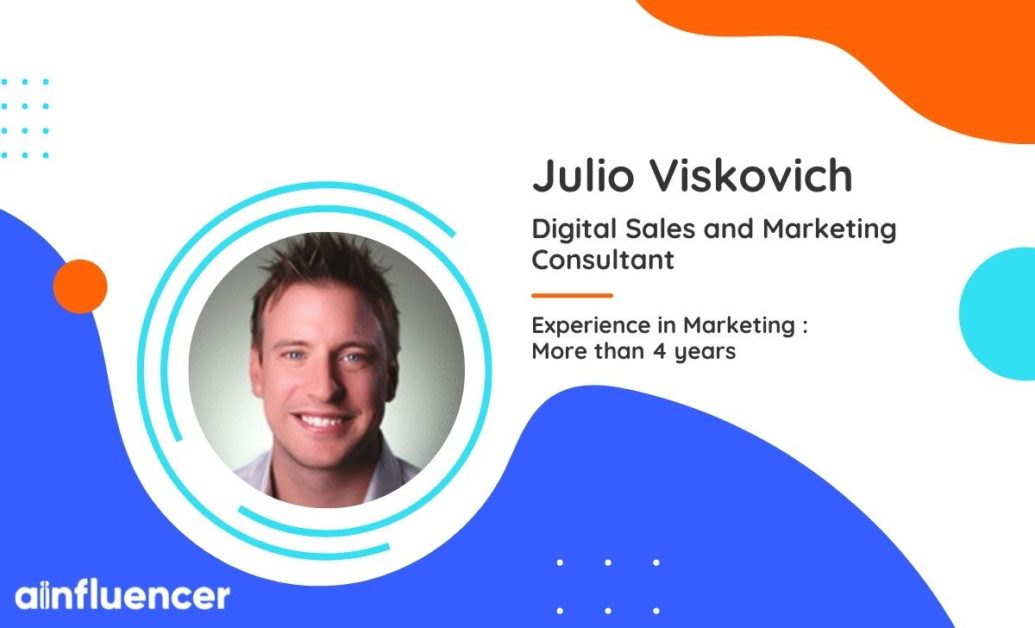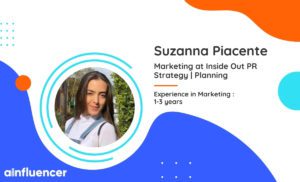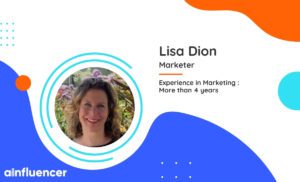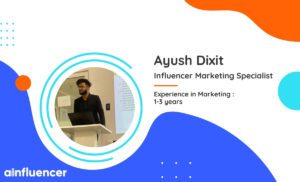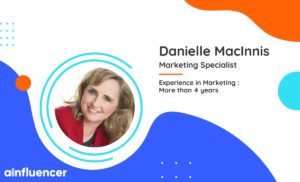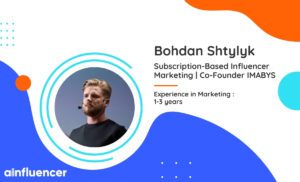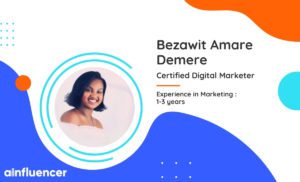How would you compare Influencer Marketing with digital advertising?
Digital marketing includes all online platforms that communicate with potential customers. It is paid for and owned by a business to earn profits and can include things like email marketing campaigns, SEO practices, and paid ads. Influencer marketing, on the other hand, garners more trust and leverages real people not directly connected to the brand. Influencers have their own loyal communities that are highly engaged and so conversion results are guaranteed. They can be very economical and very specific about their niche. You expect influencer marketing to develop a lot in the next few years.
Which social platforms do you think will be the most used by influencer marketers in the next 5 years?
Instagram/YouTube/TikTok
How do you currently find relevant and high-quality influencers for your marketing campaigns?
Influencer discovery platforms
How would you decide which influencers to work with?
Track their performance over time
How should brands use Instagram influencers to grow their business? What is your personal experience with Instagram influencing?
For small and medium-sized enterprises, influencers can help tremendously. However, it tends to be more financially viable to concentrate on nano or micro-influencers. Nano-influencers maintain strong connections with a small group of highly-engaged followers. Nano-influencers (1000-10,000 followers) nurture online communities around nuanced topics and subcultures. Because of how connected followers feel to a Nano-influencer, it is typically easier for these influencers to drive sales. Micro-influencers (10,000-100,00 followers) are often considered the “sweet spot” of influencer types, Micro-influencers engage just enough followers to achieve decent brand awareness while still nurturing deep connections with their audience. Most seasoned influencer marketers recommend that brands start with micro-influencers and expand into other influencer groups as they gain more experience.

What are some common tools and strategies to help grow your presence on Instagram? Are you currently using any tools?
Canva is amazing for creating stunning posts on Instagram with little to no graphic design skills. I love it. Wishpond allows you to create awesome Instagram contests to engage your followers, and NapoleonCat allows you to analyze your competitors on Instagram. These are just a few of the tools I use on a daily basis.
Which content categories (i.e. verticals) are likely to become the most popular on Instagram for influencers?
Instagram is such a visual medium that I think almost any industry that concentrates on visual products. This ranges from Food, Fashion, Beauty, to Automobiles and everything in between. Any business that wants to tell a story should be on Instagram.
What advice would you give to a new business that wants to gain and grow its paid sponsorships?
Be very careful when selecting your influencer because it is not the influencer that will yield the results, it’s the community they have. Ensure that their community is real, highly engaged, and that they meet your specific target market’s niche. That recipe will garner the best results – especially with a limited budget.
How do you think Influencer Marketing will grow among small businesses in near future?
Small businesses may be able to create brand ambassador programs with one specific influencer. Creating a brand ambassador program for your audience has lately become a very important influencer marketing strategy. By doing that you allow your audience to be a part of your brand. Your brand ambassadors can be long-standing influencers for your brand and they can run brand promotions amongst their community.
How do you currently collaborate with and pay Instagram influencers? Name any tools and strategies that you use.
Using programs like Ainfluencer can help identify niche influencers that have large and loyal followings that are worth paying for to amplify your message.
